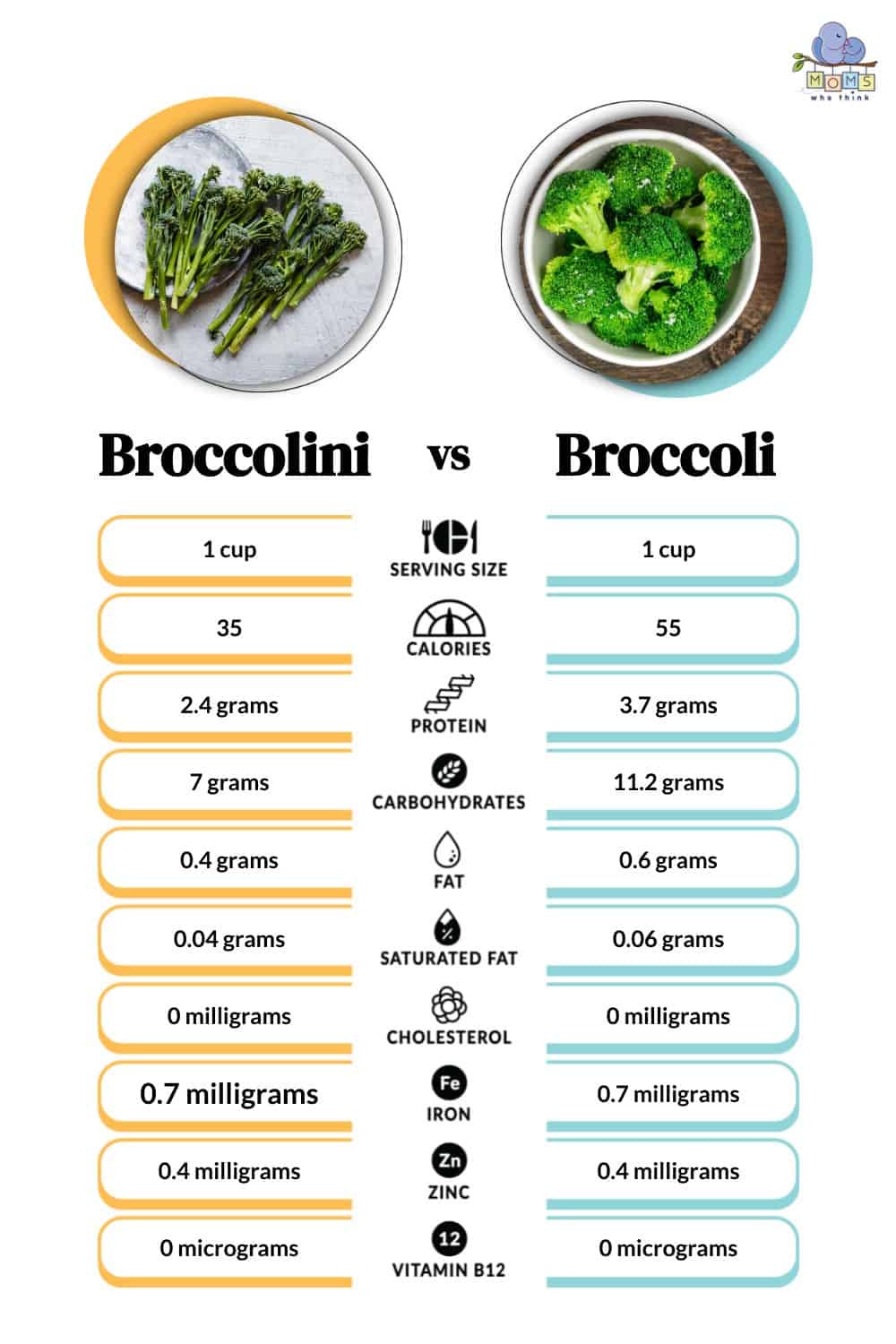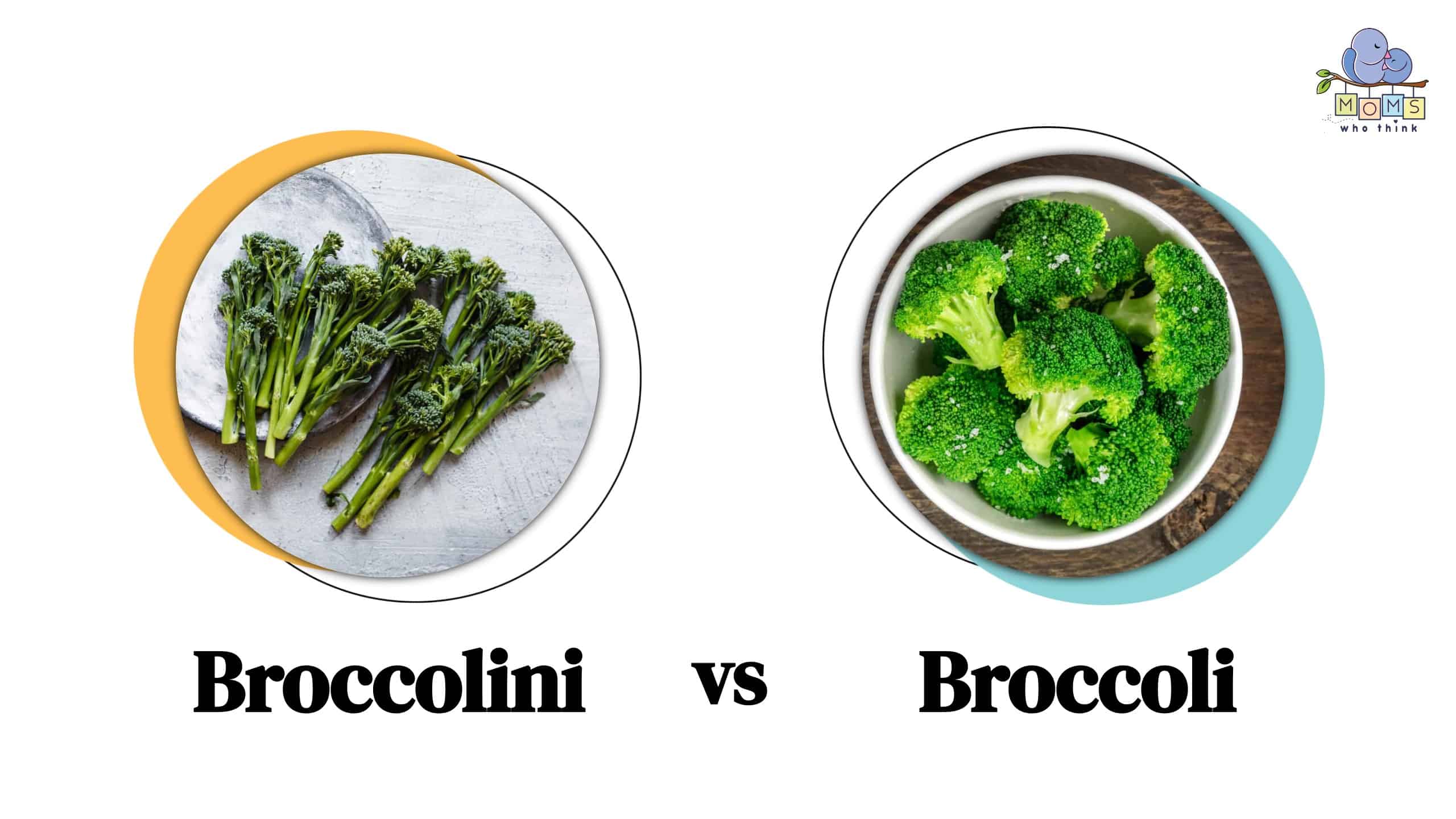When it comes to green vegetables, broccolini, and broccoli are two popular choices that often find their way onto our plates. Although they may look similar at first glance, these vibrant vegetables have distinct characteristics that set them apart. From appearance and flavor to usage and origin, broccolini and broccoli offer unique qualities that can enhance any culinary experience.
In this article, we will delve into the key differences between broccolini and broccoli, exploring their appearance, flavor, usage, and even their nutritional profiles. So, whether you're a health-conscious foodie or simply curious about these versatile veggies, read on to discover 4 key differences between broccolini and broccoli and gain insights into their nutritional benefits.
1. Broccolini vs. Broccoli: Origin
Broccolini and Broccoli have very different origins. These origins highlight the different breeding processes and histories of broccolini and broccoli, contributing to their unique characteristics and culinary uses.
Broccolini Origin:
Broccolini is a hybrid vegetable that was developed by the Sakata Seed Company of Yokohama, Japan. It is a cross-breed of broccoli and Chinese broccoli (gai lan). The goal was to create a vegetable with a milder taste that could grow in hotter climates and expand the broccoli market.
Broccoli Origin:
Broccoli is a distinct vegetable that has been cultivated for centuries. It belongs to the brassica family, along with cabbage and Brussels sprouts. The cultivation of broccoli can be traced back to Ancient Greece and Rome, where people began growing it in their gardens. Over time, farmers selectively bred different varieties of the plant, resulting in the development of the broccoli we know today.
2. Broccolini vs. Broccoli: Appearance
When it comes to appearance, broccolini and broccoli have some similarities, but there are also noticeable differences. These differences in appearance make broccolini and broccoli visually distinct and offer unique options for culinary presentations.
Broccolini Appearance:
Broccolini has long, slender stalks with small florets atop and delicate yellow flowers, giving it a more delicate and graceful appearance.
Broccoli Appearance:
Broccoli has a larger head with thick stalks and florets, creating a bulkier and more robust appearance While both vegetables belong to the brassica family, broccolini is actually a crossbreed of broccoli and Chinese broccoli, while broccoli is a distinct vegetable in itself.
3. Broccolini vs. Broccoli: Flavor
When it comes to flavor, broccolini and broccoli have some distinct differences:
Broccolini Flavor:
Broccolini has a milder and sweeter flavor compared to broccoli. It is often described as having a sweet, earthy taste. The flavor of broccolini is more refined and delicate, with a slight hint of asparagus. It is less bitter than standard broccoli, with a mild sweetness more akin to Chinese broccoli.
Broccoli Flavor:
Broccoli has a slightly bittersweet flavor and thick, meaty stems. It has a more robust and pronounced taste compared to broccolini. The flavor of broccoli is often described as slightly bitter.
These flavor differences make broccolini and broccoli suitable for different culinary applications and can influence the overall taste of the dishes in which they are used.
4. Broccolini vs. Broccoli: Usage
Both broccolini and broccoli can be enjoyed as standalone vegetables or incorporated into a wide range of recipes. Their versatility allows for creativity in the kitchen and the ability to experiment with different flavors and cooking techniques. Here are some common uses for each:
Broccolini Usage:
- Broccolini is versatile and can be used in a variety of dishes. It is often sautéed, steamed, grilled, broiled, or roasted to bring out its flavors and tenderize its stems.
- It can be used as a side dish, added to stir-fries, pasta dishes, or grain bowls, or incorporated into salads and vegetable medleys.
- Broccolini's tender stems and small florets make it a great addition to vegetable platters, and crudité trays or be used as a garnish for various dishes.
Broccoli Usage:
- Broccoli is a widely used vegetable and can be prepared in numerous ways. It can be steamed, boiled, roasted, stir-fried, or even eaten raw.
- It is commonly used in stir-fries, pasta dishes, casseroles, soups, and salads.
- Broccoli florets can be added to omelets, quiches, or frittatas for a nutritious boost.
- Broccoli can also be used as a crudité or dipper for various sauces and dressings.
Nutritional Comparison of Broccolini and Broccoli

When comparing the nutritional profiles of broccolini and broccoli, both vegetables offer a range of essential nutrients that contribute to a healthy diet. While the specific nutrient content may vary slightly, they share many similarities in terms of their health benefits.
While both broccolini and broccoli offer similar nutritional benefits, it's worth noting that the exact nutrient content can vary depending on factors such as growing conditions and cooking methods. However, incorporating either of these vegetables into your diet can contribute to a well-rounded and nutritious eating plan.
Broccolini Nutritional Value:
Similarly, broccolini is packed with essential nutrients. It contains vitamins C, K, and A, as well as folate, fiber, and antioxidants. Broccolini also provides a good amount of calcium and iron, which are important for bone health and oxygen transport in the body.
Broccoli Nutritional Value:
Broccoli is known for being a nutritional powerhouse. It is rich in vitamins C, K, and A, as well as folate, fiber, and antioxidants. These nutrients play important roles in supporting immune function, promoting healthy vision, aiding in digestion, and reducing the risk of chronic diseases.
In Conclusion
In conclusion, exploring the key differences between broccolini and broccoli has shed light on these two remarkable vegetables. From their distinct appearances and flavors to their origins and culinary uses, broccolini and broccoli offer unique qualities that can elevate any dish. Additionally, comparing their nutritional profiles reveals that both vegetables are packed with essential vitamins, minerals, and antioxidants, making them valuable additions to a balanced diet.
Whether you prefer the tender stalks and delicate florets of broccolini or the classic, hearty florets of broccoli, incorporating either of these vegetables into your meals can provide a range of health benefits. From boosting immune function to supporting bone health, these nutrient-rich vegetables offer a delicious and nutritious way to enhance your overall well-being.
So, the next time you're at the grocery store or planning your meals, consider the differences and similarities between broccolini and broccoli. Embrace the versatility of these vegetables and experiment with various cooking methods to discover new and exciting ways to enjoy their flavors and reap their nutritional rewards.

